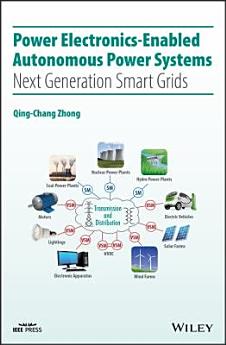Power Electronics-Enabled Autonomous Power Systems: Next Generation Smart Grids
O ovoj e-knjizi
As the first book of its kind for power electronics-enabled autonomous power systems, it
• introduces a holistic architecture applicable to both large and small power systems, including aircraft power systems, ship power systems, microgrids, and supergrids
• provides latest research to address the unprecedented challenges faced by power systems and to enhance grid stability, reliability, security, resiliency, and sustainability
• demonstrates how future power systems achieve harmonious interaction, prevent local faults from cascading into wide-area blackouts, and operate autonomously with minimized cyber-attacks
• highlights the significance of the SYNDEM concept for power systems and beyond
Power Electronics-Enabled Autonomous Power Systems is an excellent book for researchers, engineers, and students involved in energy and power systems, electrical and control engineering, and power electronics. The SYNDEM theoretical framework chapter is also suitable for policy makers, legislators, entrepreneurs, commissioners of utility commissions, energy and environmental agency staff, utility personnel, investors, consultants, and attorneys.
O autoru
QING-CHANG ZHONG, PhD, FELLOW of IEEE and IET, is the Max McGraw Endowed Chair Professor in Energy and Power Engineering and Management at Illinois Institute of Technology, Chicago, USA, and the Founder and CEO of Syndem LLC, Chicago, USA. He served(s) as a Distinguished Lecturer of IEEE Power and Energy Society, IEEE Control Systems Society, and IEEE Power Electronics Society, an Associate Editor of several leading journals in control and power engineering including IEEE Transactions on Automatic Control, IEEE Transactions on Industrial Electronics, IEEE Transactions on Power Electronics, and IEEE Transactions on Control Systems Technology, a Senior Research Fellow of Royal Academy of Engineering, U.K., the U.K. Representative to European Control Association, a Steering Committee Member of IEEE Smart Grid, and a Vice-Chair of IFAC Technical Committee on Power and Energy Systems. He delivered over 200 plenary/invited talks in over 20 countries.





